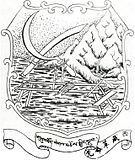Partido Revolucionario de Tíbet
El Partido Revolucionario de Tíbet (en en chino tradicional, 西藏革命黨; pinyin, Xīzàng Gémìngdǎng Partido Revolucionario de las Provincias Occidentales, en en tibetano: ནུབ་ལེགས་བཅོས་སྐྱིད་སྡུག, wylie: nub-bod-legs-bcos-skyid-sdugPartido de la Reforma de Tíbet Occidental[1][2][3]) también conocido como Partido Progresista y en inglés como Partido del Mejoramiento, fue un partido político tibetano antifeudal, secular y vinculado al nacionalismo chino de Chiang Kai-shek y el Kuomintang. Fundado por el intelectual chino y monje reformista Gendün Chöphel[4] y el acaudalado aristócrata tibetano Pandatsang Rapga en Kalimpong, India.[5] Rapga apoyaba el dominio chino sobre Tíbet y era opositor del Dalái Lama y pensaba que la influencia británica sobre Tíbet resultaba beneficioso. Ragpa era también ferozmente anticomunista y se opuso al maoísmo. Ragpa era seguidor de Sun Yat-sen y creía firmemente en sus ideas, en especial la de los Tres Principios del Pueblo que buscaba implementar en Tíbet. Sin embargo, tras la invasión china del Tíbet en 1950 y el triunfo del maoísmo en China, Ragpa escapó a Taiwán donde fallecería y su partido sería disuelto.[6]
| Partido Revolucionario de Tíbet | ||
|---|---|---|
 | ||
| Presidente | Pandatsang Rapga | |
| Fundación | 1939 | |
| Disolución | 1950 | |
| Ideología |
Nacionalismo chino Anticomunismo Secularismo | |
| Posición | Derecha | |
| Sede | Kalimpong | |
| País | República de China | |
| Afiliación internacional | Kuomintang | |
Referencias
editar- ↑ Original from the University of Michigan London School of Economics and Political Science (1986). Government and opposition, Volume 21. Weidenfeld and Nicolson. Consultado el 27 de diciembre de 2011. «Tibetan (ie Xizang) Improvement Party. In Chinese: Xizang Gemingdang: Tibet Revolutionary Party. In English: Tibetan Progressist Party. « India Office Records, L/P&S/l 2/4210 Coll. 36/39, 23 October 1943. 36 Oral information.»[1]
- ↑ Royal Asiatic Society of Great Britain and Ireland (1989). Journal of the Royal Asiatic Society of Great Britain & Ireland. Royal Asiatic Society of Great Britain & Ireland. p. 306. Consultado el 27 de diciembre de 2011. «Calcutta). The Chinese name for this movement was Xizang gemingdang, roughly "Revolutionary party of the Western Provinces" (Xizang being a general Chinese designation for Tibet, beside Xifan); and the English name usually given it was apparently the Tibetan Progressive Party. Heather Stoddard devotes many interesting pages to her research on this "progressive", or "revolutionary",».
- ↑ Original from Northwestern University Government and opposition, Volume 21. London School of Economics and Political Science. 1986. Consultado el 27 de diciembre de 2011. «In Chinese: Xizang Gemingdang: Tibet Revolutionary Party. In English: Tibetan Progressist Party.»
- ↑ Luo, Jia (2009). REFORM IN TIBET AS A SOCIAL MOVEMENT (A thesis submitted in conformity with the requirements for the degree of Master of Education Graduate Department of Sociology & Equity Studies in Education Ontario Institute for Studies in Education University of Toronto). pp. 32. 37. Consultado el 24 de abril de 2014.
- ↑ Arpi, Claude. «The Karma of Tibet». pp. 51, 53, 56, 66, 80, 94, 95, 96, 97. Archivado desde el original el 23 de septiembre de 2015. Consultado el 24 de abril de 2014.
- ↑ Gray Tuttle (2007). Tibetan Buddhists in the Making of Modern China (illustrated edición). Columbia University Press. p. 152. ISBN 0-231-13447-9. Consultado el 27 de diciembre de 2011.